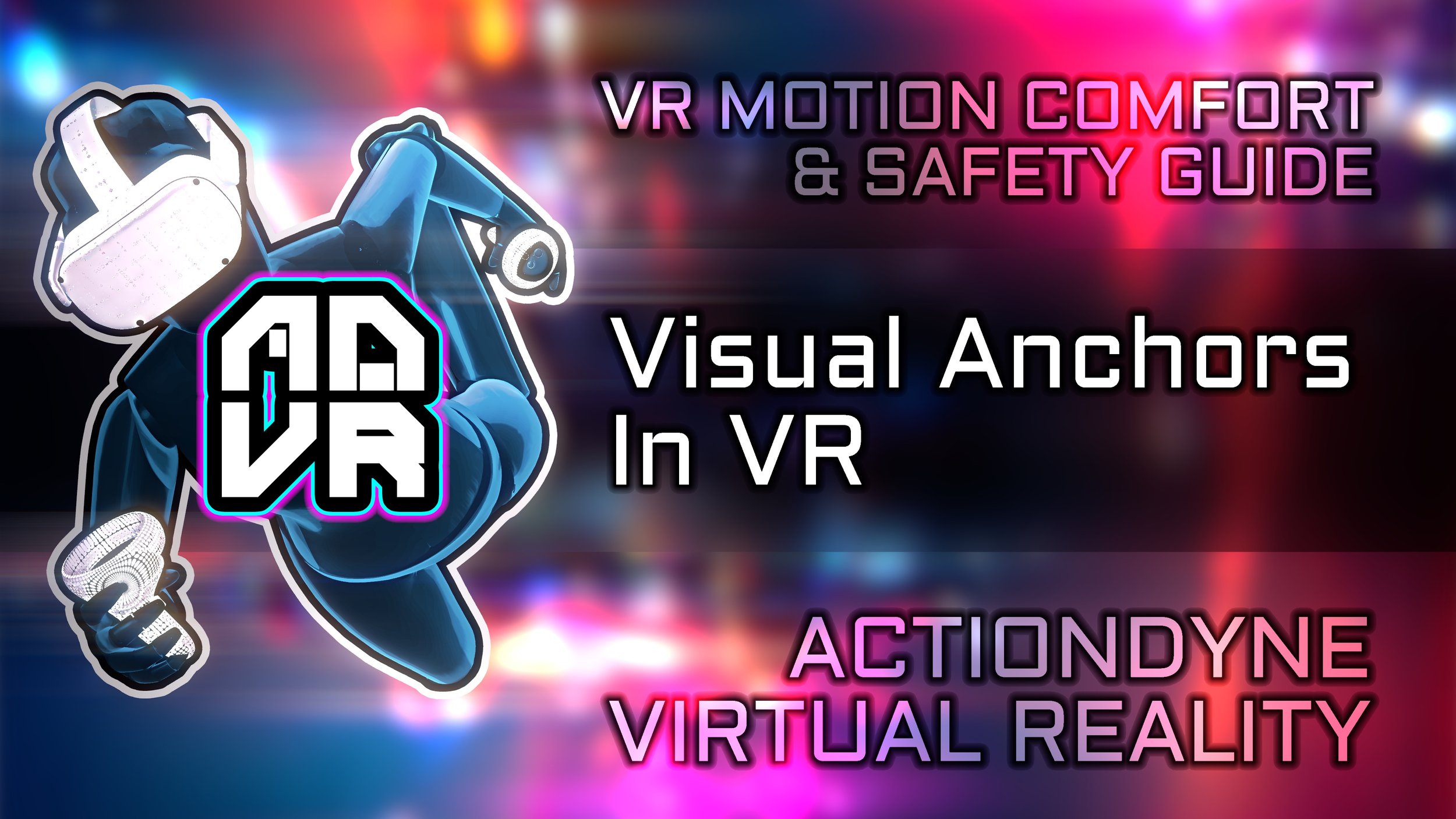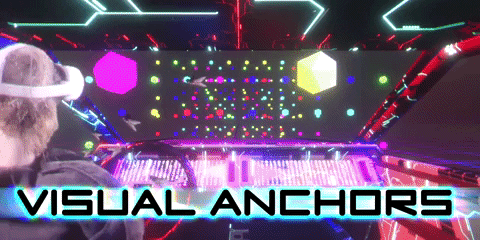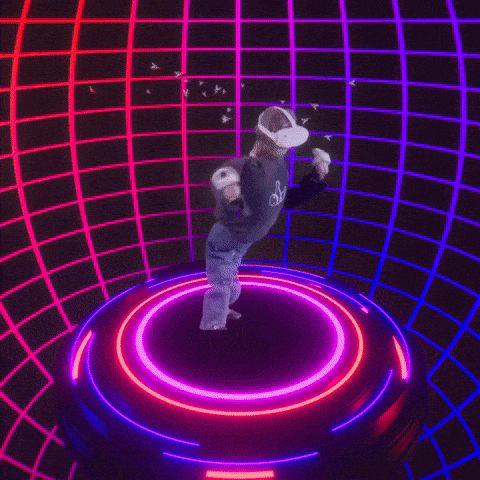VR Comfort- Visual Anchors in VR
I wanted to give people a resource to learn a bit more about motion comfort, and VR. It can be an overwhelming experience, and people react differently. I hope you find this useful.
Visual Anchors, as I like to call them, are some sort of visual reference in VR that is somewhat associated with your actual position in the real world, but not part of your VR “avatar”.
Having something else to serve as a visual reference seems to help a lot with motion discomfort. As my friend, GWC3, told me, “For whatever reason, when the payer thinks the car or spaceship they are in is moving, it’s somehow easier to handle than the player moving through space themselves”. But beyond driving a car, this can be applied in a very simple way.
THE PLATFORM
GIVE YOU THAT “ANCHOR” TO WHERE YOU ARE IN THE REAL WORLD
The Rob, standing on a virtual platform in VR
Many titles use a platform to help give you that “anchor” to where you are in the real world. This can help you from wandering out of the guardian boundary you’ve set up… allowing you to move back to where you were standing a moment ago. If the virtual reality experience has you floating in space… and you take one step forward and then spin around… you are likely not going to be able to find your way back to the center of your guardian boundary without activating it. This visual anchor can also mean a lot for your personal safety, and you have a good reference where solid ground is.
COCKPIT VISUAL ANCHORs
Cockpit Anchors help reduce motion sickness quite a bit. The most basic explanation I can give for this is that instead of you moving around in a virtual environment, instead the player is inside of a moving vehicle. In this case, having the player as “Not Moving” but rather they are stationary in a moving vehicle it can reduce motion sickness quite a bit. The amount of of screen space the cockpit blocks can change how effective it is at increasing Comfort in VR.
MINIMAL
EXAMPLE OF MINIMAL COCKPIT VISUAL ANCHOR
HAVING A LITTLE BIT OF A VISUAL REFERENCE OF SOMETHING YOU ARE SITTING ON, OR RIDING THAT DOES NOT SURROUND YOU. MAYBE ONLY VISIBLE WHEN YOU LOOK IN A PARTICULAR DIRECTION.
Best to think of a motorcycle. Looking to the sides gives you a very unobstructed view. You really only see the visual anchor in a portion of your 360º view.
A Good Example of this would either be Void Racer Extreme. It’s a rather intense game but they've packed some comfort settings in there to help. Given the speed at which you move, there is very little in terms of this bike are hanging onto. They make up for this with other settings, but you can play without them… if you dare.
MEDIUM
An example of a Medium Cockpit Visual Anchor.
A Medium sized Cockpit Anchor will surround the player, blocking more of their view, which can help give your eyes and brain something to latch onto.
and is very much like the platform in effectiveness, however some games have the car shift around a little bit when you run into things or get hit. Car racing games may have this or a full cockpit… sometimes having both as an option.
Full
An example of a full cockpit visual anchor.
This is the most effective way to combat Motion Discomfort in any title where you have to move through the virtual world. Having the interior wrap around you in every direction you look can make a big difference. Looking away from windows if it’s too much can give you a moment to realign yourself.
Having most of your view blocked by the cockpit, can help drastically reduce any motion discomfort. Some games have settings that can change how much of the view the cockpit is blocking.









